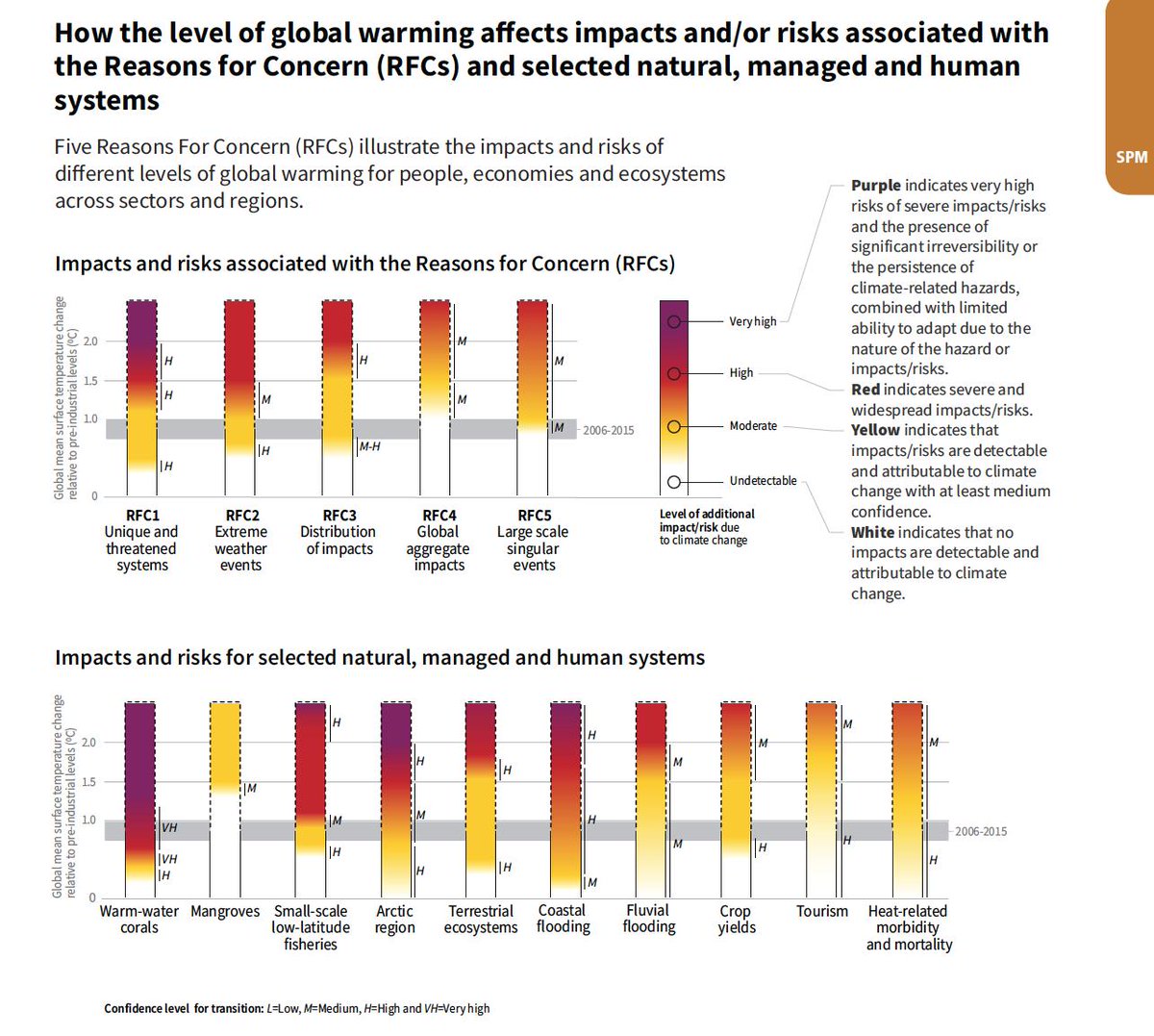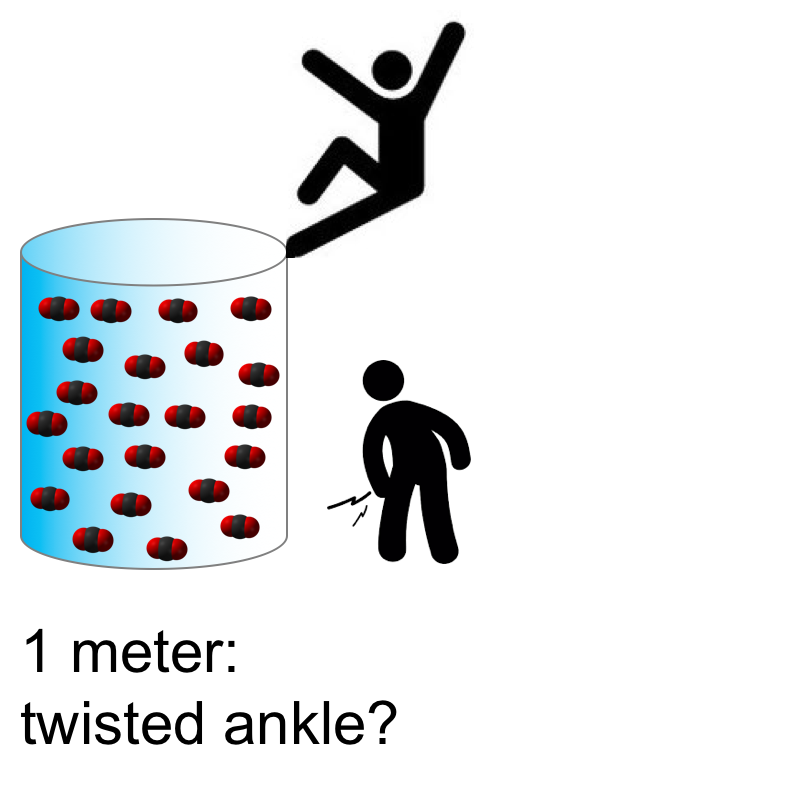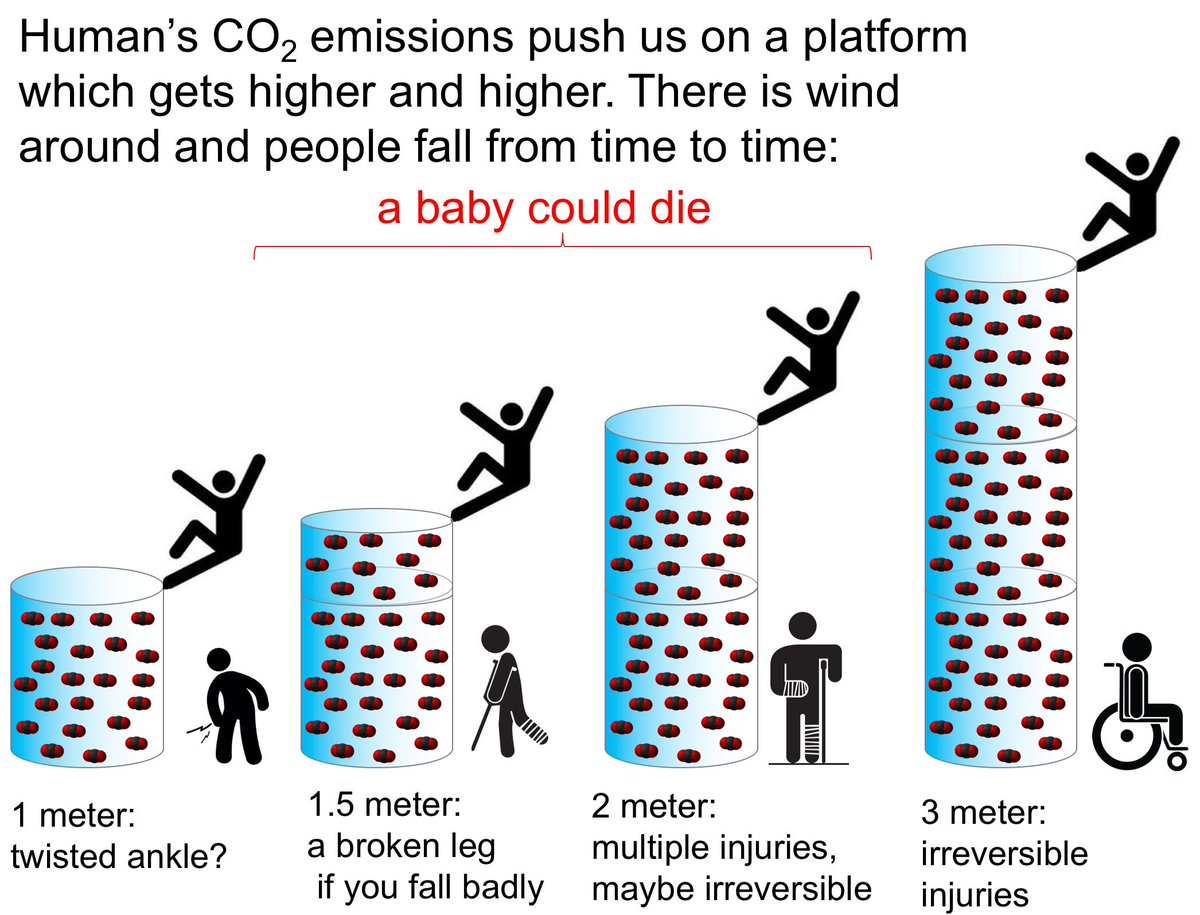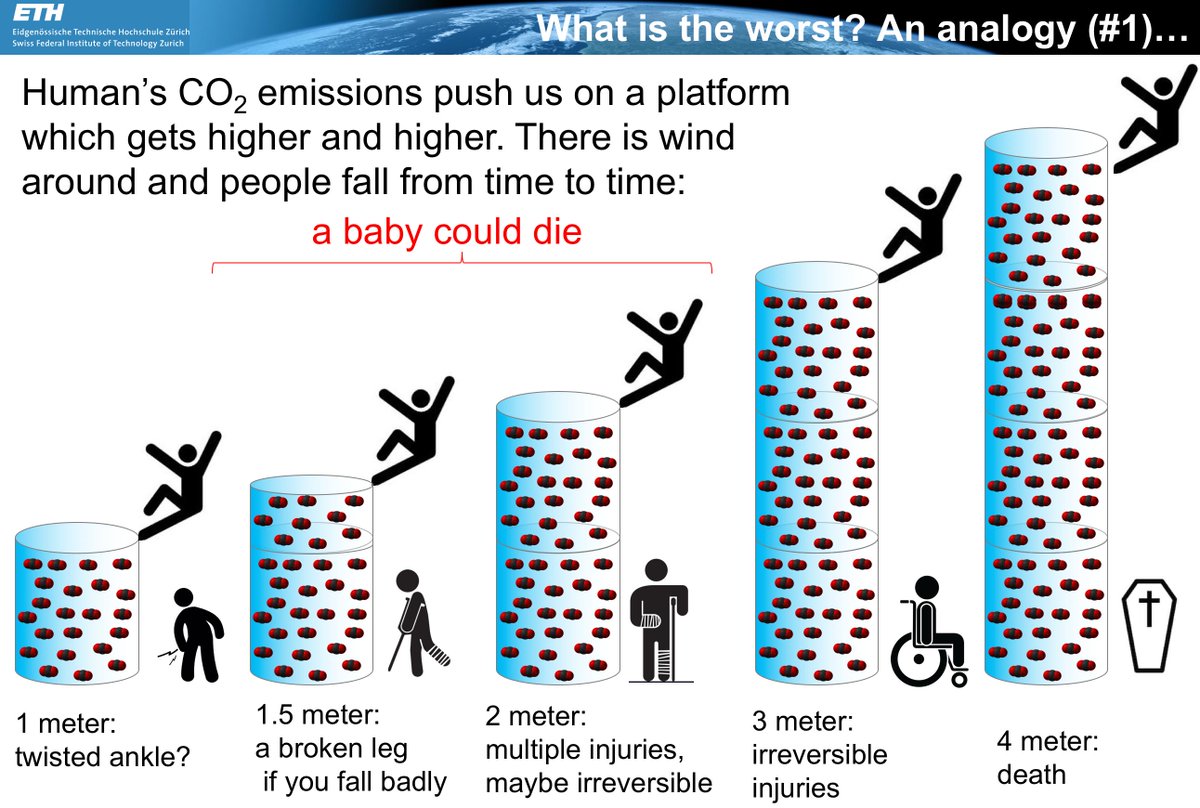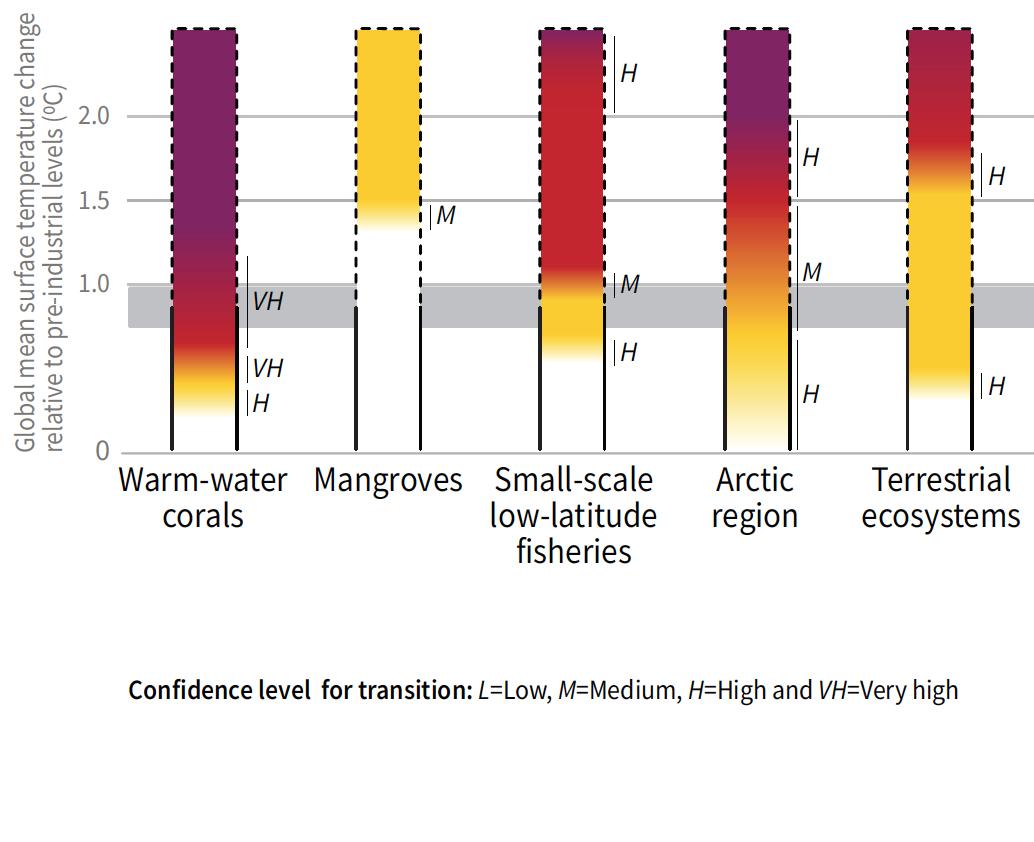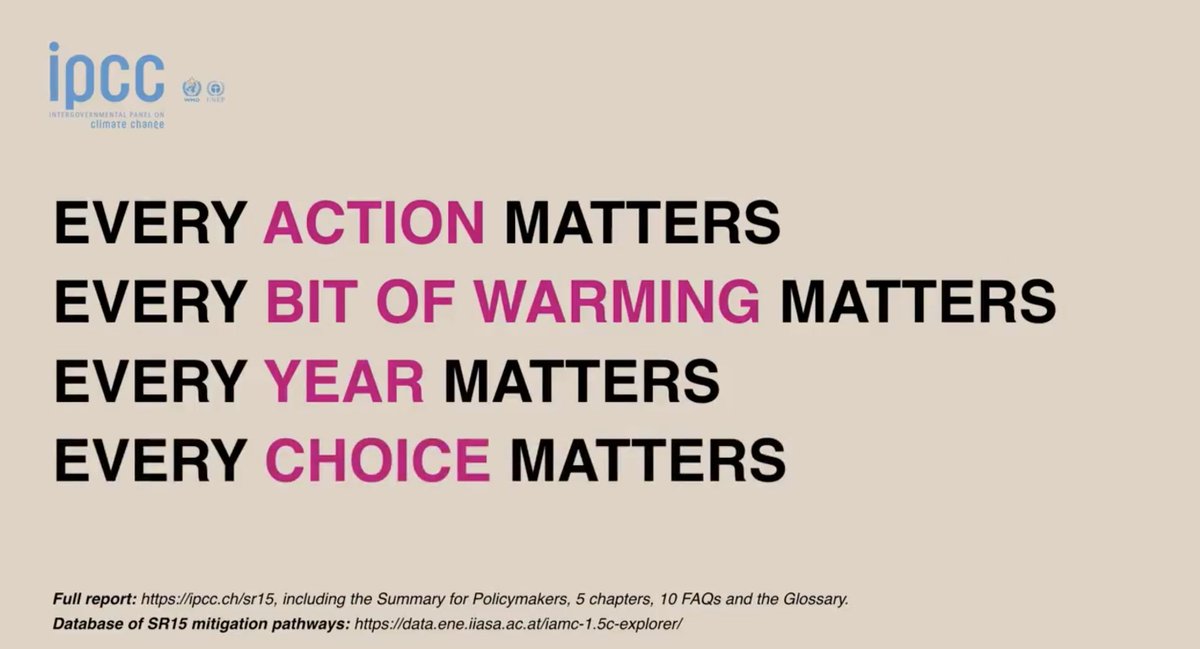Message to fellow climate scientists & #ClimateTwitter: After seeing many variations on theme "Are we going to reach a catastrophe in 12 years?”, I think it could be more helpful if we were focusing instead on: "How much climate change can still be considered safe?” (Thread; 1/n)
This thread builds upon my recent @theAGU webinar (see below) and the @IPCC_CH #SR15 report… (2/n) https://twitter.com/SISeneviratne/status/1138487368837685248">https://twitter.com/SISenevir...
Many scientists point - rightfully - to the fact that we cannot state with certainty that climate would suddenly go berserk in 12 years if we weren’t doing any climate mitigation. But who can state with certainty that we would be safe beyond that stage or even before that? (3/n)
And what means “being safe”? Is human extinction the only limit beyond which we feel it would not be safe for us to go? (4/n) https://twitter.com/DrKateMarvel/status/1135637164467863553">https://twitter.com/DrKateMar...
The main issue is that risks and impacts are gradually growing with higher levels of warming. How can this be conveyed? (5/n) @IPCC_CH
Turns out that we know how to deal with this type of dilemma in our everyday life: Take tobacco… Many of us don’t indulge even in 1 single cigarette for years, not because this one cigarette would kill us but because we know that once we would get into the habit of smoking (6/n)
... we’d get into more risks of poor health and possibly cancer. Should we fight about establishing the exact number of cigarettes at which our “health breakdown” would happen? Probably not very useful. We know some might be more vulnerable or unlucky than others… (7/n)
Suffices to know that each cigarette (or each year smoking) is increasing the risk to our health and of that of people around us… (8/n)
In my @theAGU webinar presentation, I tried to use the following analogy. Let’s imagine that we (humanity) are on a platform that is getting higher and higher with increasing #CO2 emissions. (9/n) @NaomiOreskes @KHayhoe @MichaelEMann @piersforster @JoeriRogelj
There is wind and people can fall down. At 1 meter (e.g. 1°C such as present global warming), risks are still limited: You might twist your ankle, though already at that level a baby could die or an older person could seriously be harmed. (10/n)
At 1.5m it would start getting more dangerous, you could break your leg. Beyond 1.5m, injuries could become irreversible: Already at 2m and even more so at 3m. (11/n)
At 4m most people falling down would die. Of course some might argue that you don’t need to fall down, even if the platform is at 4m, the wealthy people could build barriers and strap themselves to the platform. (12/n)
But how about those who cannot afford a barrier? And how about those who are vulnerable & could be affected even at lower levels (babies, elderly)? And if you get a tornado coming by, even the best barriers or straps won’t stop you from falling down. (13/n)
Finally, we know that at a given height, the platform becomes unstable and all of us would fall down. We don’t know for sure at what height this would be, but we have evidence showing that risks of this happening would increase above 1.5m. (14/n) https://twitter.com/richardabetts/status/1121887329088569344">https://twitter.com/richardab...
So when do we stop emitting #CO2 and pushing up our platform with further CO2 emissions? Any additional CO2 emission increases the height irreversibly on the time scale of present human generations… (15/n) @meinshausen @Knutti_ETH @damon_matthews @BillHareClimate @gcarbonproject
The SR15 concludes that we& #39;d reach +1.5°C in 2030 if CO2 emissions continue as now. If we want to buy time, we should decrease our CO2 emissions by at least 50% until then - starting with what is easiest - bc some emissions will take longer to get rid of (e.g. aviation). (16/n)
As scientists, none of us are saying that we are all going to die beyond +1.5°C. But I& #39;d say that we are not guaranteeing that we could live safely beyond +1.5°C of global warming. And in fact, even at +1°C already too many people are dying… (17/n) https://twitter.com/CarbonBrief/status/1136332043493826560">https://twitter.com/CarbonBri...
... and risks & impacts to ecosystems are steadily increasing (18/n) @oveHG @wolfgangcramer @DJ_Gerics @TaniYa_Nic @InesCamilloni @FaEngelbrecht
A key take-home message to me is the summary of the @IPCC_CH outreach video ( https://www.youtube.com/watch?v=rVjp3TO_juI">https://www.youtube.com/watch... …): "Every action matters, every bit of warming matters, every year matters and every choice matters…" (19/n) @anna_pirani @valmasdel @ReisingerAndy
To come back to the theme of this thread, I think we should not let the overarching question be “When would the climate catastrophe happen?”, but “Until when can we guarantee that we would avoid major risks to people & the environment?” (20/n) @richardabetts @kmac @JPvanYpersele
Namely, we should shift from avoiding Type I errors to avoiding Type II errors (i.e. missing a risk that potentially is there - since we have already established that climate change is happening). See also following paper on a similar topic https://twitter.com/nature/status/1110196401856831488">https://twitter.com/nature/st... (21/n)
Thinking of that question (What& #39;s still safe?) shows that the only responsible answer is: We should do all what is in our power to reduce CO2 emissions immediately & drastically. Because we& #39;re poisoning our world, as tobacco would be poisoning our body if we were smoking. (22/n)
Finally, and this is not negligible: Many solutions to shifting to a low-CO2 society are available now. Life with low CO2 could be a nice life, it is not necessary to assume that this would imply huge sacrifices…. (/end) @Peters_Glen @AarneGranlund https://twitter.com/SISeneviratne/status/1075129132088987649">https://twitter.com/SISenevir...

 Read on Twitter
Read on Twitter